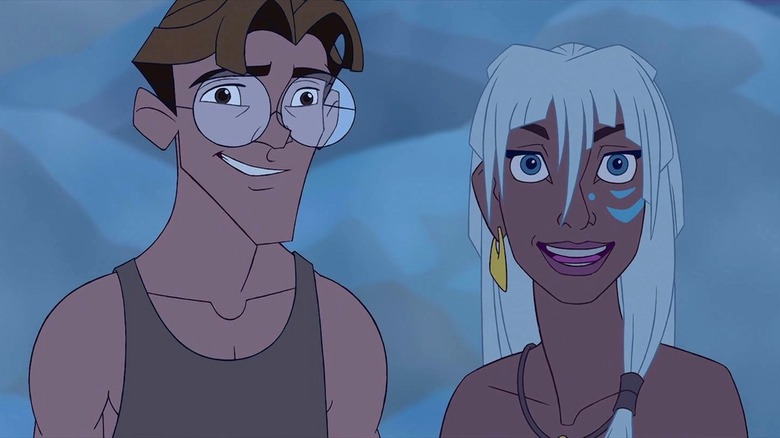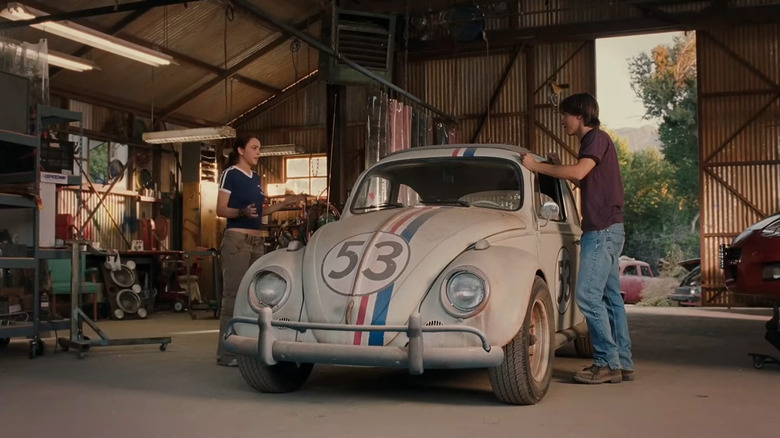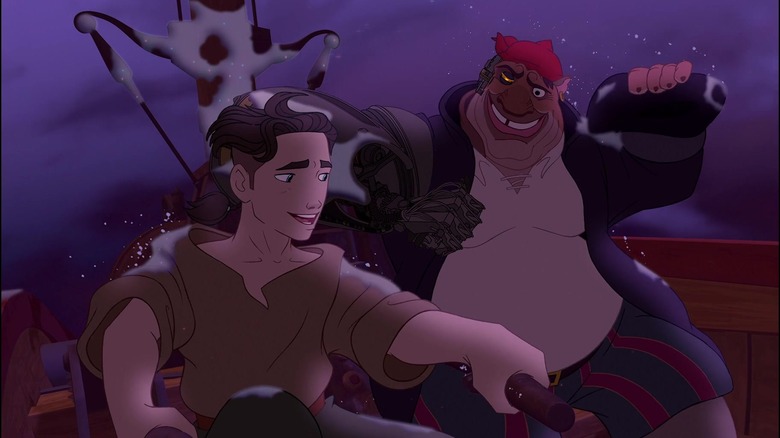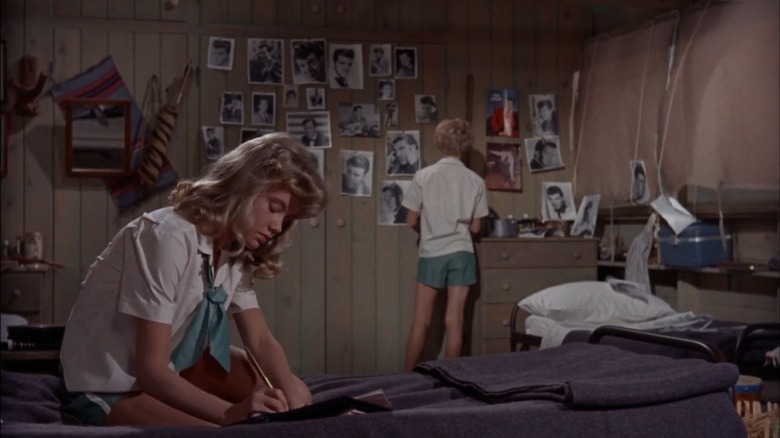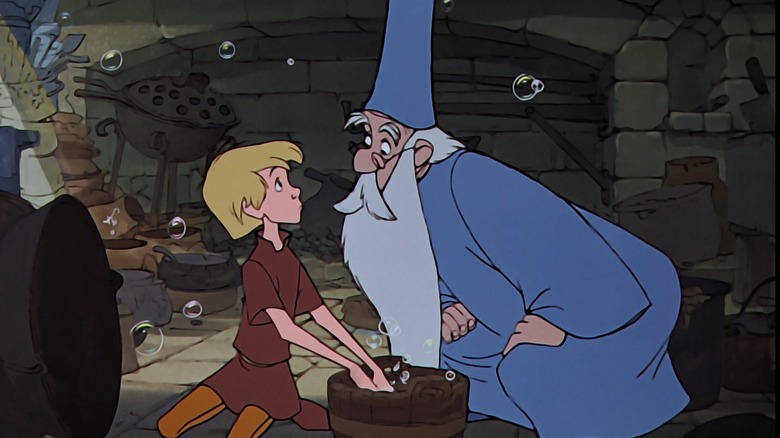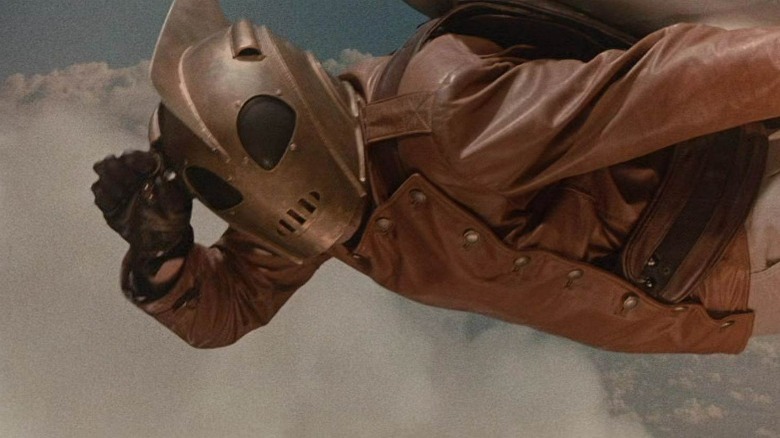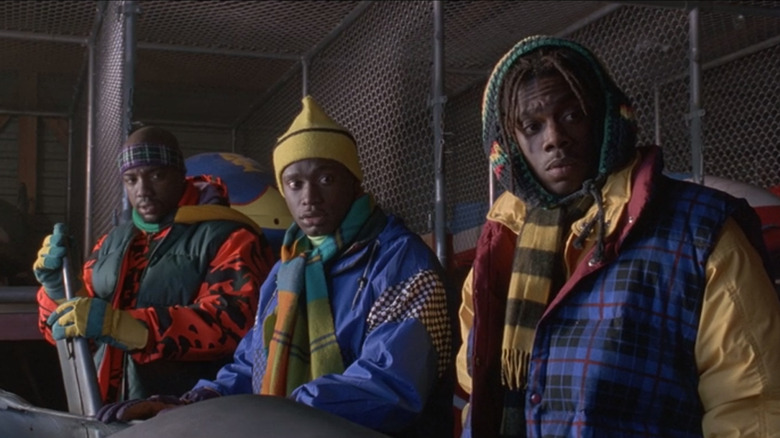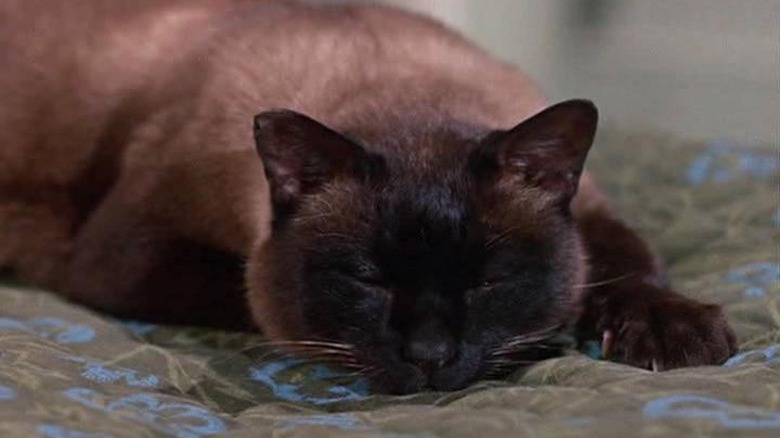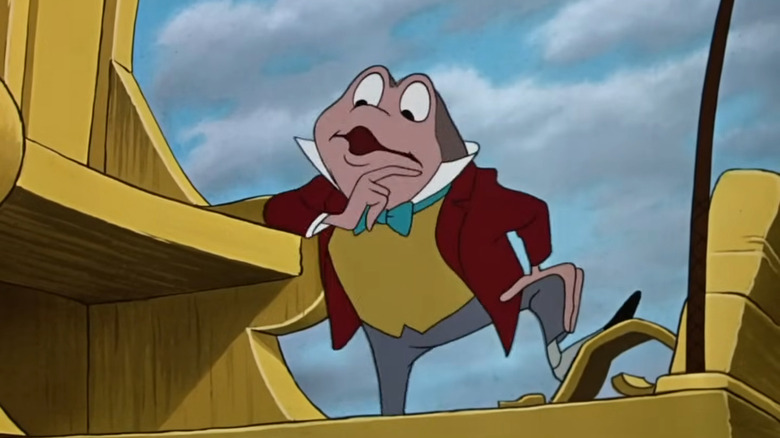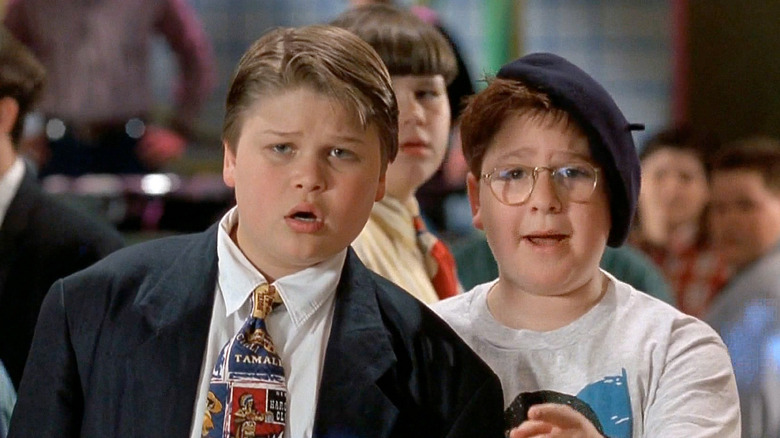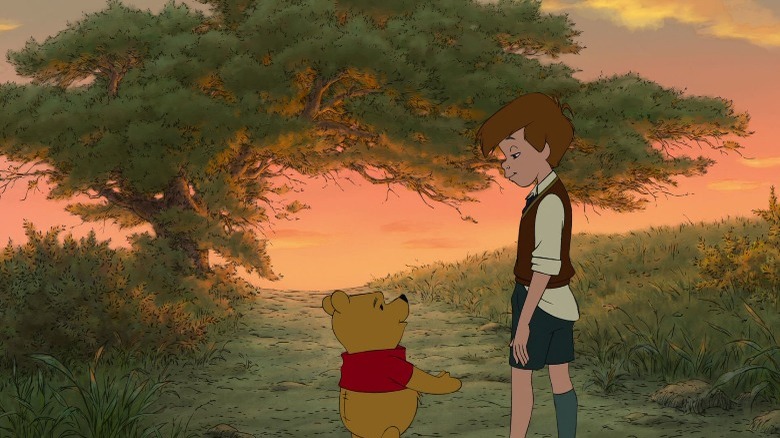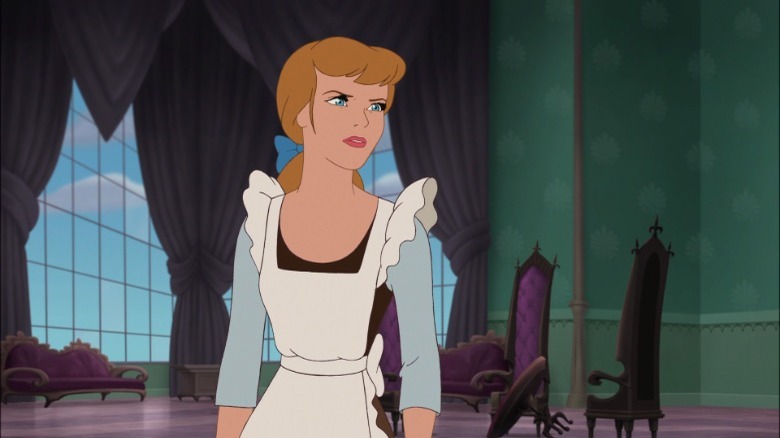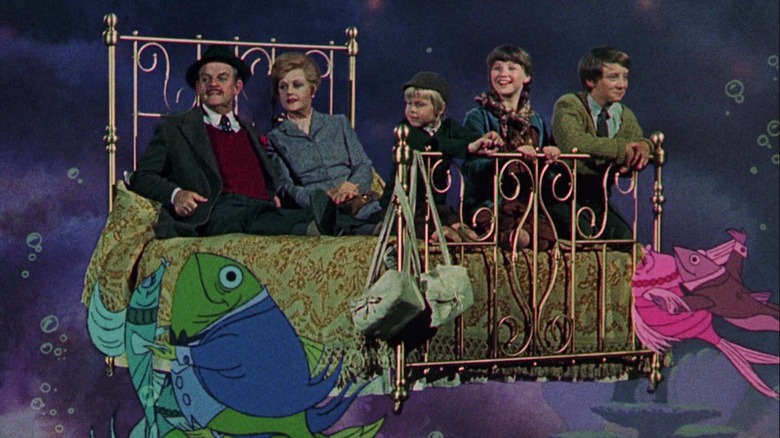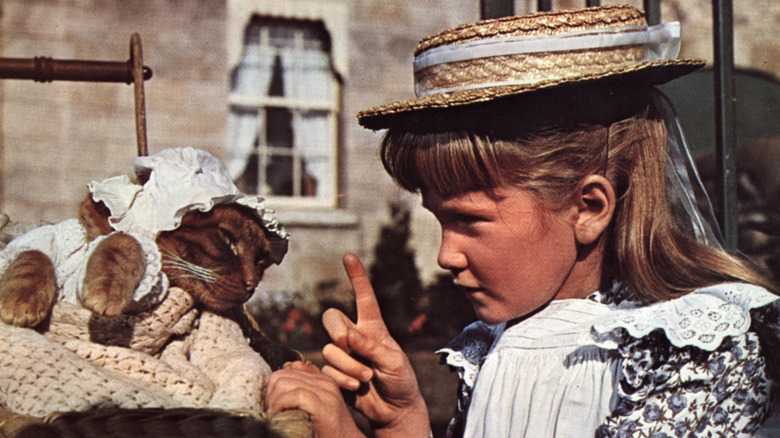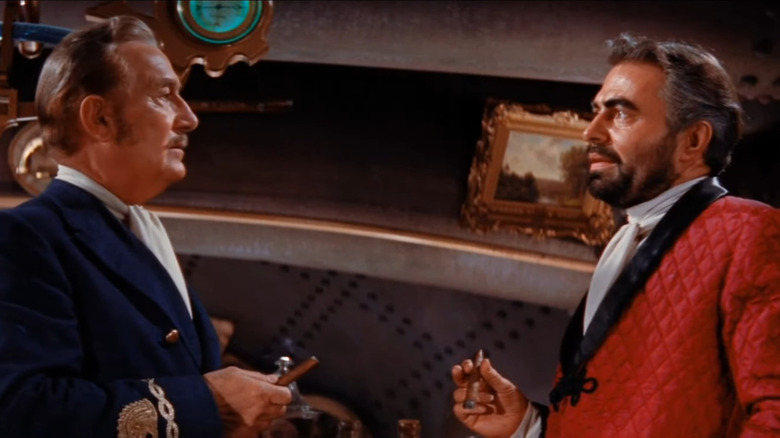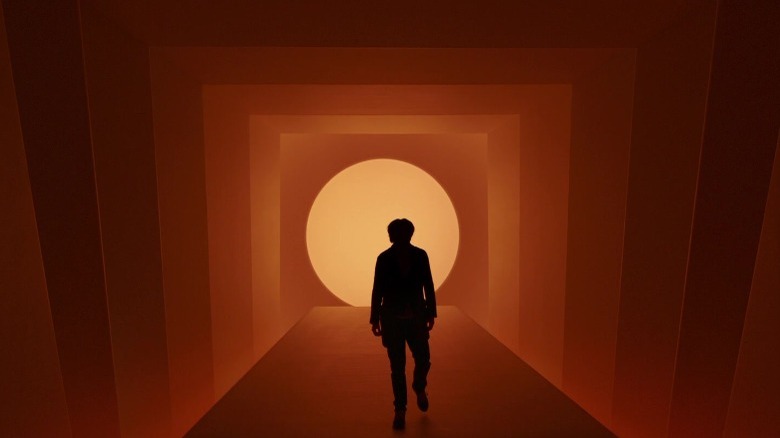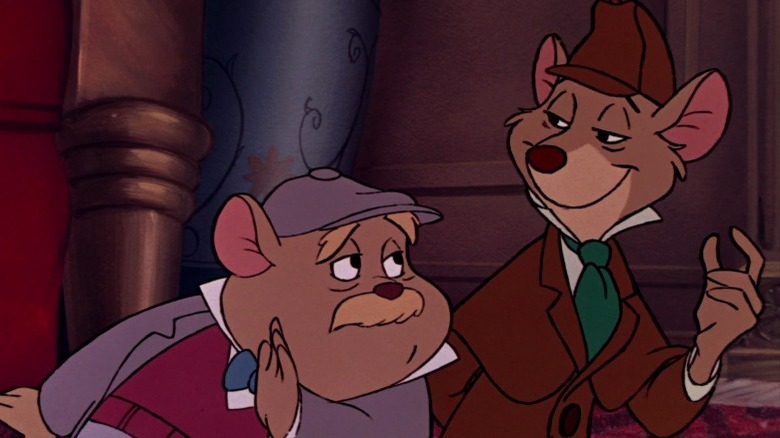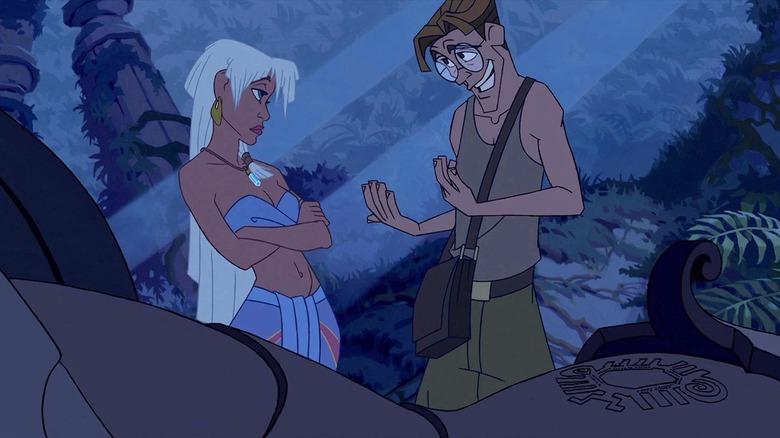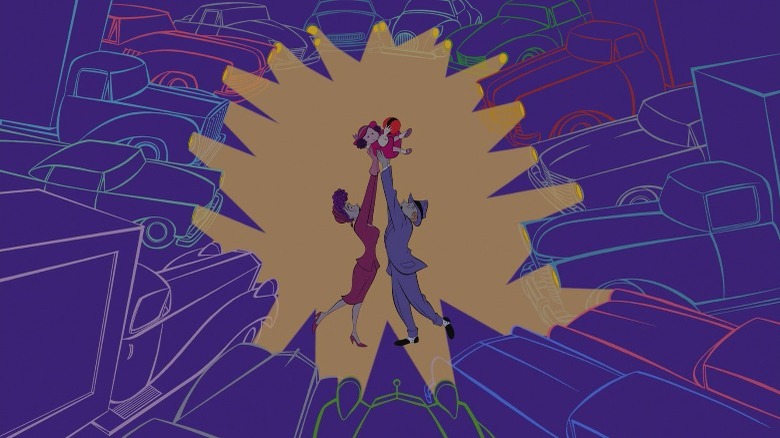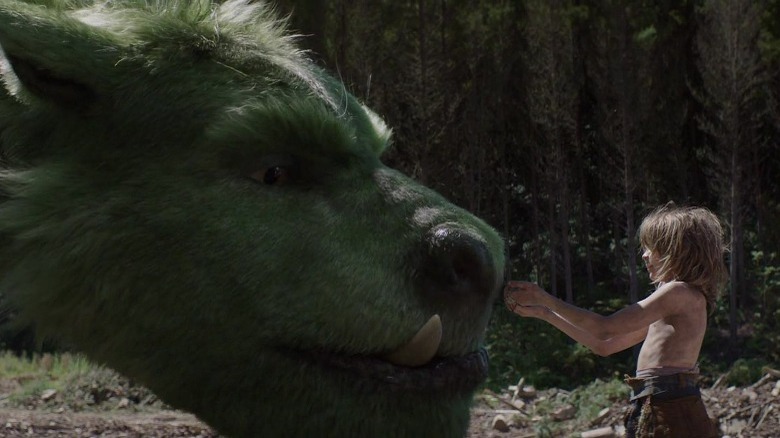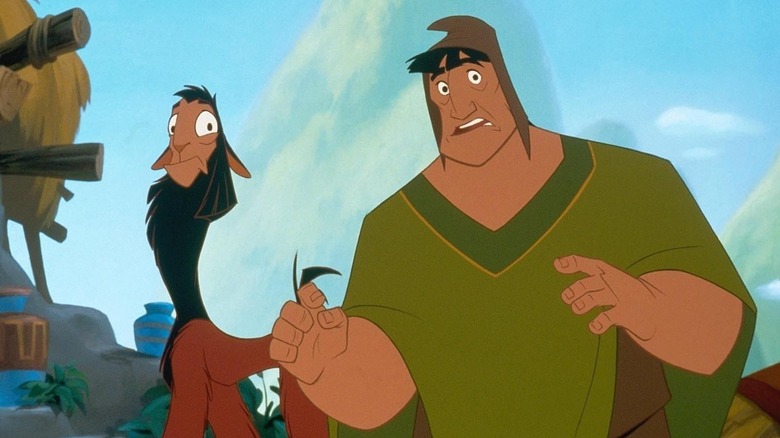The 20 Most Underrated Disney Movies You Need To See, Ranked
To some degree, "underrated Disney movie" is an oxymoron. No other movie studio in history has been so successful at positioning virtually all of its production into the epicenter of mainstream visibility. But there are still those Disney films that haven't been given as much recognition as they deserve, whether as a result of critical mistreatment, audience rejection, or mere underestimation.
This list ranks the 20 most underrated Disney movies ever based on a combination of criteria: box office success, critical reception, cultural footprint, mainstream popularity. To be considered "underrated," movies listed here must have a lower reputation than they would merit — whether that means they're good and considered bad, great and considered okay, or masterpieces and considered just good. The bigger the discrepancy, the higher it is on the ranking, all the way up to a #1 pick that should be held as one of the studio's totemic masterpieces yet remains merely well-liked.
20. Herbie: Fully Loaded (2005)
There's no better way to kick off a list of underrated films than with an effort from Angela Robinson, who ranks among the most underrated American directors working. In 2005's "Herbie: Fully Loaded," Robinson brought the offbeat fantasy comedy chops she'd honed in cult classic "D.E.B.S." into the Disney fold, and the result was the first truly memorable "Herbie" film in years.
The sixth entry in the decades-running franchise about a sentient 1963 Volkswagen Beetle, "Herbie: Fully Loaded" is led by "Freaky Friday" star Lindsay Lohan at her teen-star peak as Margaret "Maggie" Peyton, a college graduate who teams up with the car known as Herbie and endeavors to become a professional NASCAR driver. While not really a full-blown masterpiece, the film ranks among the most underrated Disney films because it's a lot more charming, thoughtful, well-acted, and goofily entertaining than its very mixed critical reception would have you believe. If nothing else, watch it for its sheer weirdness, which Robinson is uniquely skilled at playing into and naturalizing at the same time. In her confident hands, it's easy to forget that a car-human friendship even counts as an outlandish premise.
19. Treasure Planet (2002)
Adaptations of Robert Louis Stevenson's "Treasure Island" have been a Hollywood fixture since the 1910s. Unique spins on the quintessential pirate story have ranged from casting a woman as Jim Hawkins to casting Orson Welles as Long John Silver to casting the Muppets in several major roles. There have even been multiple animated adaptations and a 1950 adaptation that made history as Disney's first fully live-action fiction feature. But no version yet has been quite as unique as "Treasure Planet."
The writer-director duo of Ron Clements and John Musker had been pitching a sci-fi "Treasure Island" to Disney since the mid-'80s, giving it a complicated history before becoming a box office flop. In the end, the booming CGI tech of the early 2000s allowed them to make "Treasure Planet" the cel-animated Disney film with the most complex — and most expensive — visuals yet. Although "Treasure Planet" ultimately faced box office woes that tainted its reputation for years, it remains one of Disney's most unique, passionate, and grandiose romps — a go-for-broke space adventure that's only not as underrated as the next films on this list because an entire generation has since adopted it as a favorite.
18. The Parent Trap (1961)
Everyone knows and loves 1998's "The Parent Trap," the film that gave the world a team-up between star Lindsay Lohan and filmmaker Nancy Meyers, easily a peak in both of their careers. Considerably less well-remembered in contemporary mainstream culture is the 1961 original, which follows the exact same premise, also based on a German children's novel by Erich Kästner. Years after being separated at birth, two identical twin sisters meet for the first time at summer camp by sheer coincidence and hatch a plot to switch places and reunite their divorced parents.
Unlike the Meyers version, the David Swift-directed film takes place entirely in the U.S. Hayley Mills stars as both Bostonite Sharon McKendrick and Californian Susan Evers while their parents Mitch and Maggie are played by Brian Keith and Maureen O'Hara. Although very similar to the 1998 remake, Swift's film deserves its own flowers for the freshness and believability with which it carries out the premise, counting on the stellar cast to evoke a cozy and hilarious family dynamic. It's one of the few truly great live-action Disney films of the '60s, a certified classic that has been unduly papered over in the public imagination.
17. The Sword in the Stone (1963)
Of all the Disney animated films released in the final years of Walt Disney's tenure as ship captain, "The Sword in the Stone" is the one to have fallen through the cracks most conspicuously. More modest, pared-down, and comedic in tone than era favorites like "Sleeping Beauty," "One Hundred and One Dalmatians," and "The Jungle Book," this charming reimagining of the Arthur Pendragon mythos has also had its cultural stature impaired by its episodic nature. To a greater degree than any non-anthology Disney classic, it feels very much like a series of individual mini-stories strung together.
It's a shame, because the Wolfgang Reitherman-directed film is actually among Disney's most creative and endearing ever. The student-tutor dynamic between Arthur and Merlin is tremendously entertaining, and then there's the duel between Merlin and Madam Mim — arguably the most impressive piece of animation in Disney's entire Walt era. While the film's animated nature gives it automatic canonical status, it's somehow even more under-discussed and underestimated than a live-action classic like "The Parent Trap."
16. The Rocketeer (1991)
Joe Johnston has made an entire career out of solid genre films that kids and parents can enjoy together, and his greatest achievement — with apologies to Marvel fans — is still undoubtedly 1991's "The Rocketeer," which follows stunt pilot Cliff Secord (Billy Campbell) as he uses a found rocket pack to turn himself into a Nazi-fighting hero. Not only is this adventure flick one of the best and most singular superhero movies ever, but it's also an incomparably loving and devoted homage to Roosevelt-era pulp comics, with an aesthetic thoroughness that puts most Hollywood blockbusters to shame.
Then again, "The Rocketeer" wasn't exactly a blockbuster — its paltry box office returns were a far cry from the success that Johnson would find decades later in the genre with "Captain America: The First Avenger." But don't let the film's preposterous lack of mainstream popularity deter you from giving it a chance. From the visuals to the airtight storytelling to the phenomenally star-studded and committed ensemble, this is a must-watch for superhero fans. For a bit of reflection on the movie, check out our interview with star Billy Campbell.
15. Cool Runnings (1993)
Jon Turteltaub's "Cool Runnings" is a roundly well-liked film, especially among the '80s and '90s kids who grew up with it. We think it's also one of the best sports movies ever made. But it rarely ever seems to get cited in discussions of the best live-action Disney films, which just doesn't track. What more could you want out of a Disney movie than this?
Like many of the greatest family-friendly American films, "Cool Runnings" is an inspirational sports tale drawn from real life. But several elements set it apart in that beloved yet — let's be honest — endemically formulaic genre: the comedic slant, the focus on process and procedure, the camaraderie and charisma of the main ensemble, the irresistibly boppy soundtrack. Following the story of how Jamaica formed a national bobsled team and beat the odds to get into the 1988 Winter Olympics, the film takes relatively few historical liberties and hits every mark it possibly could, offering up a culturally specific crowd-pleaser that should be taken a lot more seriously as the perfect feat of four-quadrant entertainment that it is.
14. That Darn Cat! (1965)
Not all Disney live-action films from the mid-20th century have aged well. Generally speaking, the films driven by their conventional kid-friendly storytelling, with all the attending life lessons and simplistic conflicts, now come across as a bit cheesy, if not outright dull — give or take a "Parent Trap." On the other hand, there are films like "That Darn Cat!," which still transcends its temporal distance from contemporary audiences thanks to a dedicated focus on slapstick action, feline mischief, and the tenets of good editing.
Directed by Disney workhorse Robert Stevenson (whose quintessential work on "Mary Poppins" had netted him an Oscar nomination for best director a few months prior), the 1965 film follows DC, an unruly Siamese domestic cat who manages to wind up both sides of the law when he becomes the unlikely center of a strife between the FBI and a duo of bank robbers. A lightweight, set piece-driven comedy, it's not the best-known or most acclaimed Disney film from that period. But for evidence of what a magical touch Stevenson brings to it, look no further than the atrocious 1997 remake — which has a 36 on Metacritic and might actually still be a bit overrated.
13. The Adventures of Ichabod and Mr. Toad (1949)
It's easy to think about specific stretches of the Disney animated canon when considering the studio's most underrated films — the post-Walt slump, the "dark age" of the '80s, the inconsistent experimental period of the late '90s and early 2000s. Indeed, this list features three movies from that last era alone. But even the most inveterate Disney flop rehabilitators tend to completely ignore the "package film" age that the studio was all but forced into in the '40s, following early financial troubles and the United States' entry into World War II.
At least one Disney anthology film, however, truly deserves to be cited among the studio's high marks, and that's 1949's "The Adventures of Ichabod and Mr. Toad." Although the two medium-length segments are basically nothing alike — the first is an adorable adaptation of Kenneth Grahame's "The Wind in the Willows" starring an incorrigible talking toad while the second is a genuinely terrifying rendition of Washington Irving's "Legend of Sleepy Hollow" with the darkest ending in all Disney history. They're both must-sees in their own way, and ultimately, their tonal mismatch makes for the most interesting Disney bundle of the '40s — two great, sturdy cartoons sewn together into a jolting whole for no reason other than production expediency.
12. Heavyweights (1995)
Hollywood films celebrating the humanity and worth of fat people are few and far between, and even more so in the realm of kids' cinema. That alone would make the body positivity of "Heavyweights" a breath of fresh air. But, as if the film's importance in terms of representation and empowerment weren't enough, it's also a tremendous kids' comedy by any estimation, with the kind of perfect balance between laughs, sentiment, and strong character work that Disney always aims for and only seldom hits.
Indeed, there's an argument to be made for it as the very best film directed by Steven Brill — even if family-friendliness, societal fatphobia, and the lack of Adam Sandler have kept it from reaching the rarefied echelons of popularity of Brill's other films, such as "Mr. Deeds" or any of "The Mighty Ducks" movies. There's a reason why "Heavyweights," with its story of boys in a weight loss camp who band together against the tyrannical rule of fitness-obsessed new owner Tony Perkis Jr. (Ben Stiller), became a cult favorite despite its limited mainstream visibility. Few other family films have succeeded so thoroughly at extending love and understanding to a marginalized demographic without remotely coming across as preachy or patronizing. Above all, this movie is just great fun.
11. Winnie the Pooh (2011)
Here is where clarification about the meaning of "underrated" becomes increasingly necessary: 2011's "Winnie the Pooh" was near-universally acclaimed by critics, but it's still all but forgotten in discussions of the best Disney animated films of the 21st century. Maybe it's because of its ultra-short length (just 63 minutes, and it was still released in theaters), maybe audiences default to thinking of Pooh and company as toddler business, maybe traditional animation is out of fashion, maybe Disney just didn't market it well. But the fact is, "Winnie the Pooh" underperformed at the box office, and it didn't spark the hand-drawn animation revival it by all accounts should have.
Really, in a just world, this movie would have been a phenomenon. Even with just over an hour to present their vision, directors Stephen Anderson and Don Hall manage to concoct one of the most carefully measured, visually textured, and emotionally affecting films in the studio's history. The plot follows the usual Winnie the Pooh template, plopping us right into Christopher Robin's imagination as Pooh, Piglet, Tigger, Eeyore, and the rest of the Hundred Acre Wood gang go on a whimsical adventure to find Eeyore's missing tail. But as usual in the franchise, what matters is the acute sense of childhood nostalgia — the evocation of an emotional reality where small things feel big, big things feel manageable, and everything feels special.
10. Cinderella III: A Twist in Time (2007)
To put it as bluntly as possible, every single Disney direct-to-video animated sequel is bad — yes, even that one you rewatched 300 times as a kid — with the sole, shining, inexplicable exception of "Cinderella III: A Twist in Time." The 2007 Frank Nissen-directed film deserves a place among the top 10 most underrated Disney films ever because, while its DisneyToon Studios anti-pedigree will keep innumerable prospective fans from ever finding it, it's strong enough to genuinely go toe-to-toe with the 1950 original. Don't believe it? Then you gotta give it a watch.
The plot is better discovered than explained; all you need to know going in is that it involves time travel, an ultra-wicked Lady Tremaine, a triumphant Anastasia face turn arc, and a postmodern rejiggering of the original "Cinderella" timeline and mythology (sensibly ignoring the existence of 2002's "Cinderella II: Dreams Come True," a movie nobody on Earth needs to watch). In many ways, "Cinderella III" was the predecessor to the wave of self-reflective and deconstructionist Disney films of the 2010s and 2020s — and, even more impressively, it's actually better than a lot of those films.
9. Bedknobs and Broomsticks (1971)
"Mary Poppins" gets all the fame, but "Bedknobs and Broomsticks is an equally essential Robert Stevenson musical romp-slash-magical caretaker adventure-slash-star vehicle for a legendary British actress. The incomparable Angela Lansbury stars as Miss Eglantine Price, a Dorset woman who agrees to take in three orphan children evacuated from London during the Blitz. The kids soon find out that Miss Price is training via correspondence to become a witch and fight Nazis, but before she can complete her education, her school closes — prompting the quartet to embark on a search for Miss Price's final spell using her transporting bed.
The ingenuous literality of the central conceit — a bed that can travel anywhere in the world, as though whisking occupants away on real-life daydreams — is merely the starting point for a fantasy adventure story with all the hallmarks of a classic, from great music to endearing VFX to scrumptious costumes, to say nothing of what it adds to the elusive persona of Lansbury. It's revoltingly little-known among the Disney live-action canon, but it stands easily among its finest entries.
8. The Three Lives of Thomasina (1964)
Almost everything about "The Three Lives of Thomasina" is wholly unique in the Disney pantheon, which may explain why the film remains so little-known and so difficult to watch — as of this writing, it's not available on Disney+ or any other American streaming service. For starters, although the film is a fantasy about a cute house cat with an articulate inner monologue, it has a much more sober and melancholy tone than any talking-critter movie this side of Wes Anderson. Secondly, it deals directly with death as a primary theme, facing it head-on not just narratively but philosophically and asking what grief does to us and what it means to live a life — heady questions for a Disney flick. Thirdly, it features an extended, surreal interlude in which the titular cat goes to a cat afterlife and meets the Egyptian cat goddess Bastet before returning to our world on the second of her nine lives.
That sequence ranks among Disney's best ever, but the entirety of "Thomasina" is a hidden treasure. Not only are Thomasina's thoughts and journey thoroughly touching and fascinating, but the surrounding family story about a father (Patrick McGoohan) and daughter (Karen Dotrice) pulled apart by grief and depression is handled with care and depth worthy of a great grown-up drama. And yet, despite all this darkness, it remains a luminous, life-affirming affair — a platonic vision of what Disney movies could be if they allowed themselves to be a little thornier.
7. 20,000 Leagues Under the Sea (1954)
In his legendary four-decade career, Richard Fleischer directed exactly one film for Disney, and "20,000 Leagues Under the Sea" is infused with the same grandeur, intensity, and world-building panache of all his best work. Yet it remains curiously underseen even by Disney fans, many of whom seem to make light of the fact that the studio was responsible for one of the great Technicolor sci-fi adventures.
If you consider yourself a fan of the genre and the blockbuster films of that era, you absolutely owe it to yourself to watch "20,000 Leagues Under the Sea." Shot with expansive anamorphic lenses, the film is among the great visual spectacles that cinema has given us, and its take on the classic Jules Verne maritime tale is surprisingly pungent and faithful to the novel's darker themes. And that's not even getting into James Mason's gloriously hard-boiled performance as Captain Nemo, which makes for a spectacle of its own.
6. A Wrinkle in Time (2018)
Across her directorial work, Ava DuVernay has specialized in grounded realist dramas imbued with a sense of history and sociology, but in her one stab at high fantasy, she showed that her knack for visual storytelling and strong character work could carry over seamlessly to genre filmmaking.
Adapted from the classic Madeleine L'Engle sci-fi novel, "A Wrinkle in Time" tells the story of young siblings Meg (Storm Reid) and Charles Wallace Murry (Deric McCabe), who get pulled by a trio of kooky astral beings (Oprah Winfrey, Reese Witherspoon, and Mindy Kaling) into an interdimensional journey in search of their missing scientist father, Alex (Chris Pine). Head-tripping plot mechanics, sincere emotions, lavish visuals, and Archers-esque surrealist sets ensue, with DuVernay one-upping her own showmanship at every new turn.
Despite all that creative energy, the film was demolished by critics (though we called "A Wrinkle in Time" unique and admirable), who harped endlessly on its silliness and earnestness as if those were cardinal sins for a Disney flick, and it ultimately bombed at the box office. It's hard to imagine what more people could possibly have wanted out of it.
5. The Great Mouse Detective (1986)
The "dark age" into which Disney Animation plunged in the '70s and '80s before being revitalized by "The Little Mermaid" in 1989 gave us its fair share of hidden gems, from the low-key charm of "Robin Hood" to the emotional intensity of "The Fox and the Hound" to the zaniness of "Oliver & Company." But if there's one great film from that period that truly deserves to transcend the reputation of "minor Disney," it's "The Great Mouse Detective."
Adapted from Eve Titus and Paul Galdone's "Basil of Baker Street" book series, the film is essentially a "Sherlock Holmes" reimagining for kids, set amid London's varied population of mice and rats. It moves like a sleek, efficient procedural, full of urban cool and charismatic minor characters, with animation and designs that manage to be consistently impressive without straining for showiness. And the duel between Barrie Ingham's Basil and Vincent Price's Professor Ratigan is one for the ages — voice acting at its full-bodied best.
4. Atlantis: The Lost Empire (2001)
In addition to ranking among the most visually stunning Disney animated films ever — only Walt-era monuments like "Sleeping Beauty," "One Hundred and One Dalmatians," and "Alice in Wonderland" truly top it — "Atlantis: The Lost Empire" contains arguably Disney's strongest ragtag ensemble of human characters ever, in both design and writing, not to mention a rollicking underwater adventure at once deeply entertaining and relentlessly atmospheric. So why is it virtually never mentioned among the best Disney films?
Part of it, of course, is just the blanket dismissal of all Disney films released between "Tarzan" and "The Princess and the Frog," which comprised a commercial "second dark age" celebrated only in retrospect for its bold experimental zest. But even adjusting for that cultural apathy, the lack of recognition afforded to "Atlantis" by critics and Disney fans to this day is downright criminal. That Gary Trousdale and Kirk Wise could go from an orthodox masterpiece like "Beauty and the Beast" to a film that feels like a Mike Mignola comic brought to roaring life is all the more impressive; "Atlantis" is a film with Disney's full industrial force behind it and seemingly none of Disney's usual creative limits.
3. Fantasia 2000 (1999)
The original "Fantasia" was once underrated — for decades, its disastrous commercial performance was a thorn in the side of Walt Disney himself, and it wasn't until the "box office bomb" stigma wore off that "Fantasia" could be properly and widely appreciated as the artistic revolution that it was. 59 years later, "Fantasia 2000" turned out to be a similar box office disappointment and the final gasp of the Disney renaissance, which is why it's been pushed into the footnotes of Disney Animation history. But it really shouldn't be so, not when the film is nearly as stunning an artistic achievement as the 1940 original.
Aside from a draggy "The Steadfast Tin Soldier" adaptation, every single segment in "Fantasia 2000" is an absolute winner, marrying animation to music in ways ranging from haunting to hilarious to mind-blowing to tear-jerking, always on the cutting edge of expressionism in the medium. The "Rhapsody in Blue" and "Firebird Suite" sections, in particular, are self-evident high points in Disney history. At its best, it's the kind of movie that leaves you in awe at the sheer, overwhelming power of cinema.
2. Pete's Dragon (2016)
The trend of Disney remakes of the past decade has not produced as much of genuine artistic value as its cultural and economic ubiquity might suggest. But it has sparked at least one bona fide masterwork — and, incidentally or not, it's the least popular of the crop by far. Don't call it a live-action remake — the original 1977 "Pete's Dragon" was a mix of animation and live-action as well — but call it what it is: The one update given to one of the studio's classics so far that feels truly essential.
It helps, of course, that the 2016 "Pete's Dragon" is directed by David Lowery, and that Lowery actually gets to bring out his wistful storybook style in full force, imbuing the friendship between Pete Healy (Oakes Fegley) and forest dragon Elliot with a sense of pathos and poignancy on par with his adult-oriented work. Largely unbeholden to nostalgia, it's a movie that goes back to the basic question of what a Disney fantasy can be, and then answers that question in its own brilliant terms.
1. The Emperor's New Groove (2000)
And to think that the funniest, most original, most gloriously anarchic Disney movie of all time was nearly a conventional Renaissance-era epic musical. The production troubles of "The Emperor's New Groove" are well-documented — complete with a rare behind-the-scenes documentary called "The Sweatbox" – and they even eclipsed the movie itself to some extent at the time of its original theatrical release.
As the years have revealed, however, the Mark Dindal film is so much more special in its final form than a conventional Disney film would have been. All that's left now is for the world to acknowledge that "The Emperor's New Groove" isn't just a fun little curiosity in Disney's tier of also-rans. It's a top five Disney movie at minimum.
The story of the humbling of Emperor Kuzco after being turned into a llama by his evil scientist former advisor (who accidentally fed him extract of llama instead of poison), "Emperor" is essentially a sequence of increasingly zany, clever, and perfectly-timed gags, tied together by a farcical fantasy plot mostly untethered from the rules of logic. Unspeakably hilarious and surprising even after tens of viewings, featuring career-best performances from Eartha Kitt, Patrick Warburton, John Goodman, and David Spade alike, it's simply an all-time great animated film. Disney should consider itself lucky to call it its own.
